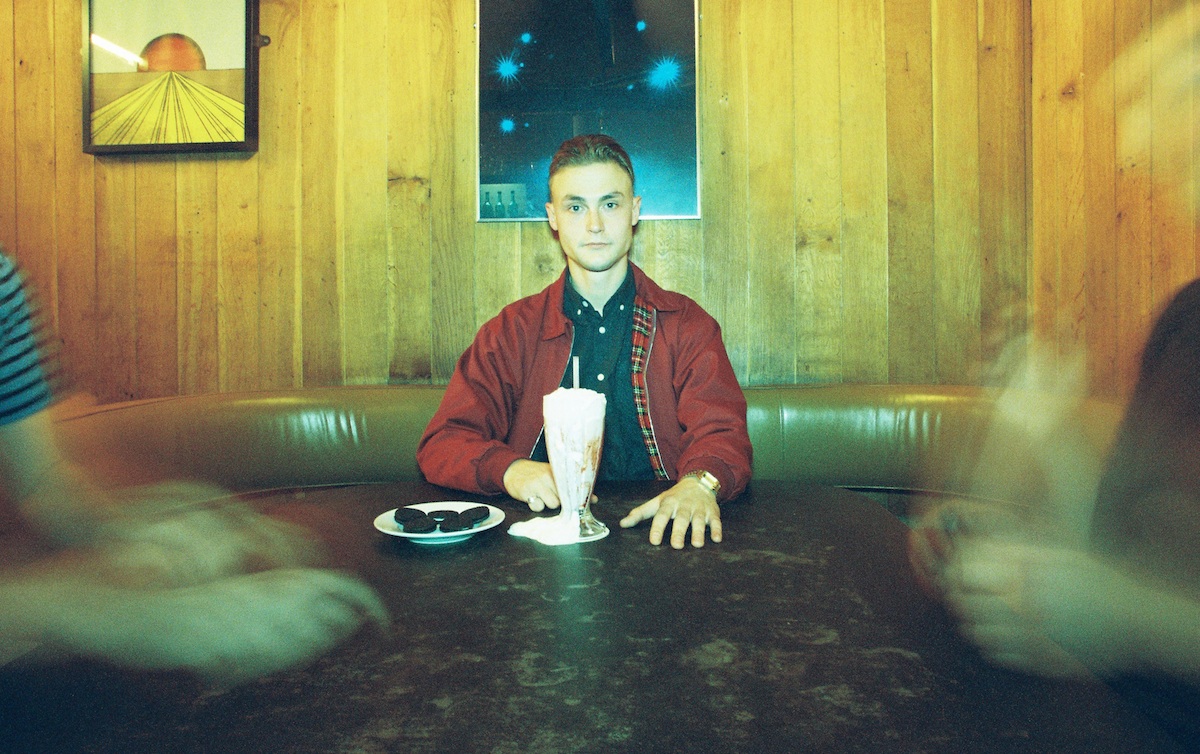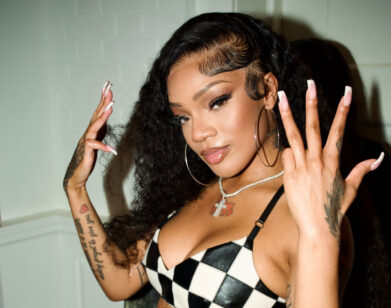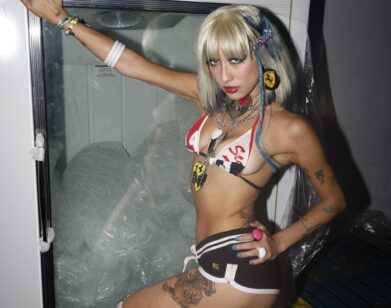Lapalux’s Track Record

ABOVE: LAPALUX. IMAGE COURTESY OF MEGAN SHARP
In the warped world of LA’s Brainfeeder label, hip-hop, jazz, psychedelia, bass music, and more break free from genre confines and run amok. Under the direction of label head and producer Flying Lotus, Brainfeeder serves as a breeding ground for artists—among them Thundercat, The Gaslamp Killer, and Jeremiah Jai—whose disparate tendencies are united by a shared love of avant-garde beats and impossible-to-categorize sonic experimentation.
Stuart Howard, who records music as Lapalux (the name is a sly abbreviation of “lap of luxury”) is about to release his debut full-length record—the excellently titled Nostalchic—with the label. The album will be his second release with Brainfeeder following his Some Other Time EP last year, and it’s looking like the 25 year old Essex, England-based artist couldn’t have fallen in with a more like-minded crew.
“Listening to the new FlyLo record really set it all off again. I have to up my game a little bit,” says Howard. While Some Other Time layered beats with the analog fuzz of AM radio, Nostalchic takes his sound further, more boldly embracing sugary R&B, along with heady beats and sound collages of his earlier work. Amazingly, some of the albums’ songs layered more than 60 tracks to create Howard’s desired effect. “I never want to put myself in one box and make just one type of music,” he says, describing the album’s eclectic mix of influences.
We caught up with Lapalux via Skype to talk about the new album, working with Brainfeeder, and how his background as a classically trained musician has played into his music.
NATHAN REESE: Hi, how are things in the UK?
STUART HOWARD: Absolutely freezing. [laughs]
REESE: Here too. Seems like winter just keeps going this year. So tell me about the new record. How have things changed since the Some Other Time EP?
HOWARD: It’s changed quite a bit, actually. I’ve tried to incorporate many more sorts of styles and experimental techniques. It ranges from R&B vibes to very experimental sort of collage-y type sounds. There are dance tracks—it’s a very mixed bag. I’ve never really put that many tunes in that sort of respect before. It’s always been something that I’ve wanted to do—to have an album where every track is kind of different. So yeah, it’s a very different vein to the rest of the stuff I’ve done.
REESE: What drew you to having such an eclectic mix of sounds on the record?
HOWARD: This has always been what I’ve wanted to do. I always want to try to experiment with lots of different things, and throughout my life I’ve been inspired by lots of different things. Instead of sitting down and focusing on one thing, I want to be able to get away with making whatever I want, really. And for everyone to appreciate it for what it is.
REESE: Is there anything specific that you’ve been into lately that you were excited about incorporating into the record?
HOWARD: I think it’s more of a case of things that I’ve always been interested in, and exploring that. It’s taken about a year to actually complete the record anyway, so I think it’s more a fact of denying myself anything current and just going away by myself and being completely away from anything that’s going on at the moment and being in my own little room with the blinds shut. Getting down and doing my own thing. I never ever listen to current music when I’m making my own records.
REESE: What inspired the record’s title? I thought it was very fitting, considering the sort of analog, even retro sounds that your music tends toward.
HOWARD: Yeah, basically it’s a combination of “nostalgic” and “chic”—just those two words. The record is very tape-driven. There’s a lot of hiss, a lot of analog techniques being used. A lot of cross-processing, and recorded material I’ve put through reel-to-reel recorders and tape machines. And then there’s the other side that’s more R&B, more focused on production stuff. Sort of getting into the digital age.
REESE: What was it like working with London-based pop artist Kerry Leatham again?
HOWARD: She actually appears on two tracks in full. And I’ve sampled a voice in another track as well. They’re probably two of the strongest tracks on the record. Personally, they’re my favorite.
REESE: Could you see yourself producing artists like Kerry on their own records, or do you always see yourself as incorporating them into your work?
HOWARD: I’ve already been in contact with a few people that I’m going to work with, and hopefully produce for rather than feature on my record. I’d love to other people, and that’s sort of in the pipeline at the moment.
REESE: Has releasing music with Brainfeeder done anything to change how you make your music?
HOWARD: I wouldn’t really say its affected too much of the making-music process. I always want to sort of do my own thing, and not really have too much outside influence from anyone else. I do have to really sit down and think about what I’m doing—you know, make it up to the standard where I’m happy to hand it over to Brainfeeder. So yeah, it’s upped the bar a bit. I’ve focused a lot on this record to make it as good as I can.
REESE: How would do you imagine people will be listening to the record?
HOWARD: A lot of it is headphone music. I could imagine the listener laying in bed and chilling out and listening to it in full… picking out the minor details and stuff. But I’ve tried to make it work for a club setting also, where people aren’t switched on to the layers and intricacies. Where they’re hearing the pounding beats and the rough and tough of it.
REESE: Have you played much of the new material live? How has it been moving the tracks to a live setting?
HOWARD: I started to make actual edits to my own tracks. I break them down into smaller parts so I can play it live, rather than just pressing play. I’ve been breaking out the vocals, even a capellas. But yeah, it is a tricky thing trying to convert 60 tracks that you’re going to play live and boil down them into four tracks.
REESE: I know you studied traditional music, but was there a moment when you realized that you wanted to make electronic music?
HOWARD: I started off playing violin, and playing guitar. A bit of piano. It wasn’t really until secondary school that I got into using computers. I got an old mp3 player with an internal microphone that got me thinking I could manipulate certain things. I started to use Reason and different types of software. What got me really into it was the experimentation of it all. How much you can push a sound, latter it, and really mess around with it.
REESE: How much do your think that your background playing instruments and going to recording school has affected the sound of your music?
HOWARD: I’ve never really gotten into the theory side of music. It’s never sunken in, even when I was studying it. I never know what I’m doing chord-wise or progression-wise. Anything that sounds good to my ear, I just put it down quickly, manipulate it, and then work from there. It is nice to have one instrument you can go back to, though. To pick up an acoustic instrument and take a break from the computer.
REESE: Do you often sample yourself playing acoustic instruments?
HOWARD: Yeah, there’s been loads of bits and pieces. I’ve got a glockenspiel and djembe drums [that I played on the record]. Also, I’ve got this thing that’s guitar to MIDI—I mess around with that as well. It does inspire me a lot to be able to pick up a guitar and strum out a few things.
NOSTALCHIC IS OUT MARCH 26. FOR MORE ON LAPALUX, VISIT HIS WEBSITE.






